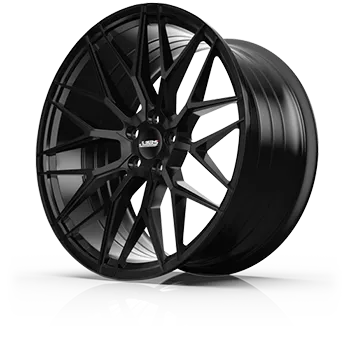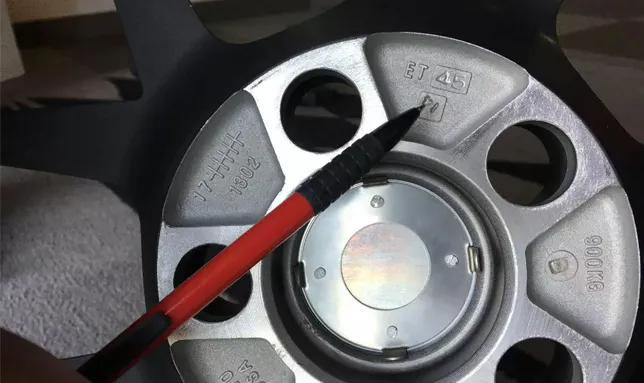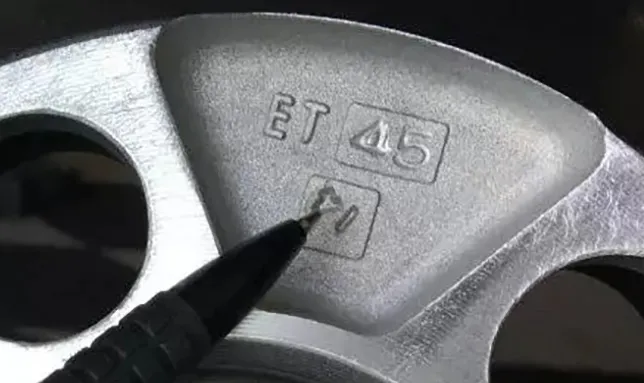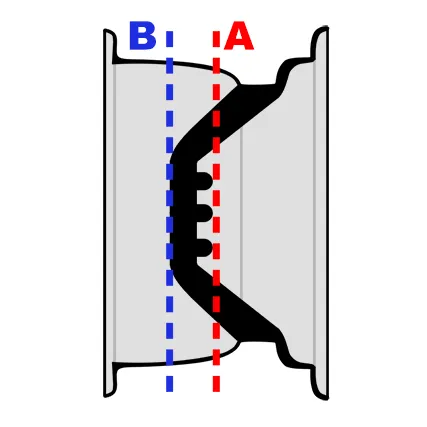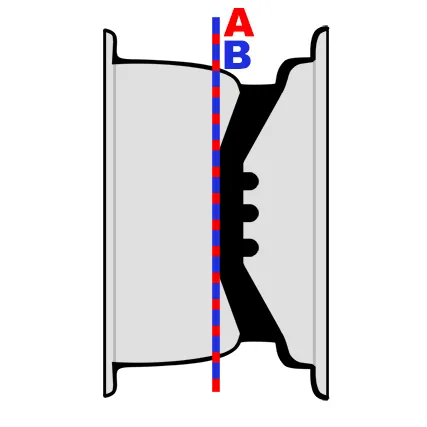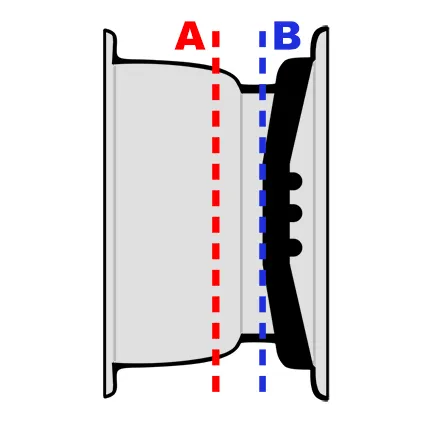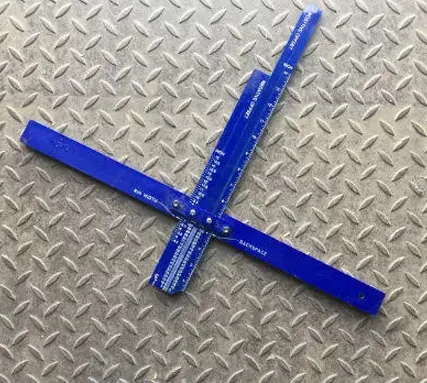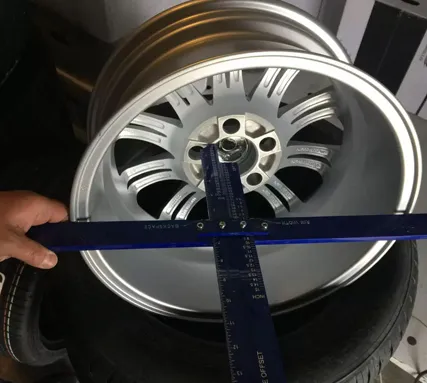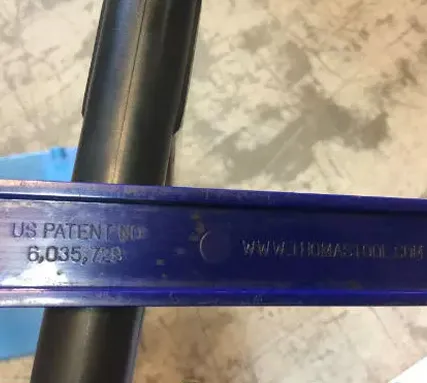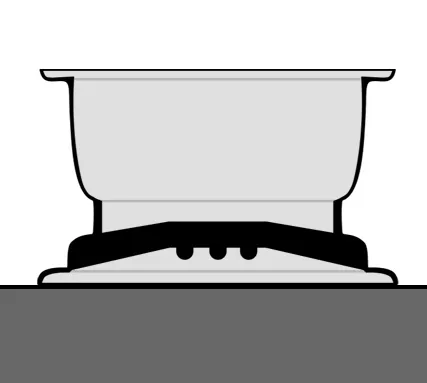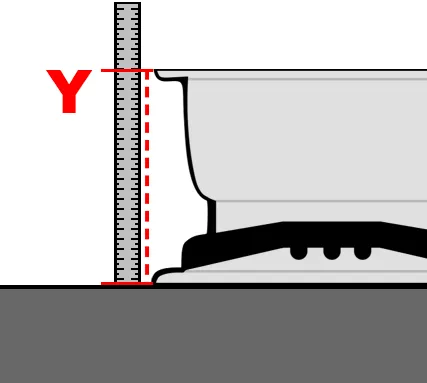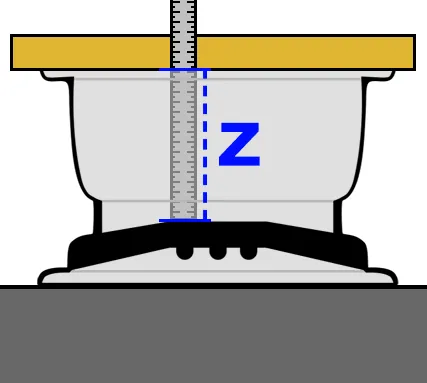Einpresstiefe (ET)
ET is an abbreviation for "einpresstiefe," which is a German term that translates to offset. It is the ET measurement that determines how deep your wheels sit in the wheel arch. A lower ET value makes the wheels extend further out in the wheel arch, while a higher ET value makes the wheels sit further inside.
You can find out what ET measurement a wheel has by looking at the backside of the wheel.

